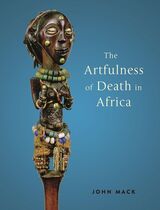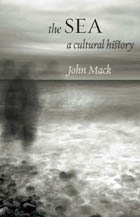
There is a true fascination with all things miniature and with the skills involved in creating a miniature work of art. Speaking of such works, anthropologist Claude Lévi-Strauss remarked that "all miniatures seem to have an intrinsic aesthetic quality." And who could fail to be beguiled by an exquisite Elizabethan miniature painting, an intricately carved Japanese netsuke, the words of the Lord's Prayer engraved on a minute jewelled clasp, or the gemlike perfection of an eighteenth-century Italian micro-mosaic?
This richly illustrated book celebrates the art of the miniature, but also looks beyond it at the many aspects of "small worlds"--in particular, their capacity to evoke responses that far exceed their physical dimensions. Author John Mack explores the talismanic, religious, or magical properties with which miniatures are often imbued. Considering a wide range of objects--from Mughal miniature paintings, ancient Egyptian amulets, Ashanti gold weights, and Aztec jade figures to Hindu temple carts, English prints and drawings, classical Greek jewelry, maps, mosaics, models, and magical gems--he examines the use of the miniature form in various cultural contexts. He also assesses the importance of scale and questions the definition of "miniature." How large or small can a miniature be? Is a map a miniaturization of a larger world? What is the point of an object that is almost too small to be seen by the human eye? From Gulliver to King Kong, classical art to surrealism, Aristotle to the Yoruba, The Art of Small Things shows us, in fine detail, the exquisite and the esoteric, the wondrous and the weird.

This book is a unique survey of the artful nature of funerals in Africa. Drawing on a wide range of historical, anthropological, archaeological, art historical, and literary sources, John Mack charts the full range of African funereal art, highlighting examples from across the continent and from ancient times to today. Featuring abundant illustrations—some of which have never been published before—The Artfulness of Death in Africa is essential reading for those interested in African art, culture, society, and history.


“There is nothing more enticing, disenchanting, and enslaving than the life at sea,” wrote Joseph Conrad. And there is certainly nothing more integral to the development of the modern world. In The Sea: A Cultural History, John Mack considers those great expanses that both unite and divide us, and the ways in which human beings interact because of the sea, from navigation to colonization to trade. Much of the world’s population lives on or near the cost, and as Mack explains, in a variety of ways, people actually inhabit the sea.
The Sea looks at the characteristics of different seas and oceans and investigates how the sea is conceptualized in various cultures. Mack explores the diversity of maritime technologies, especially the practice of navigation and the creation of a society of the sea, which in many cultures is all-male, often cosmopolitan, and always hierarchical. He describes the cultures and the social and technical practices characteristic of seafarers, as well as their distinctive language and customs. As he shows, the separation of sea and land is evident in the use of different vocabularies on land and on sea for the same things, the change in a mariner’s behavior when on land, and in the liminal status of points uniting the two realms, like beaches and ports. Mack also explains how ships are deployed in symbolic contexts on land in ecclesiastical and public architecture. Yet despite their differences, the two realms are always in dialogue in symbolic and economic terms.
Casting a wide net, The Sea uses histories, maritime archaeology, biography, art history, and literature to provide an innovative and experiential account of the waters that define our worldly existence.
READERS
Browse our collection.
PUBLISHERS
See BiblioVault's publisher services.
STUDENT SERVICES
Files for college accessibility offices.
UChicago Accessibility Resources
home | accessibility | search | about | contact us
BiblioVault ® 2001 - 2024
The University of Chicago Press









